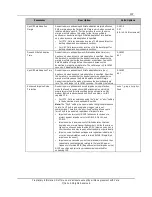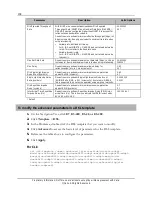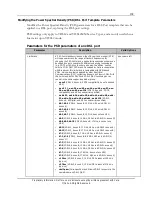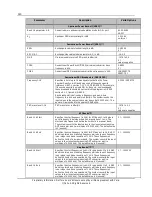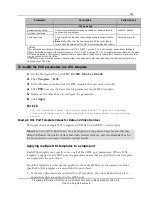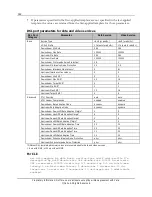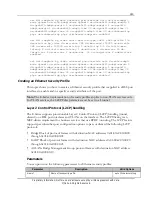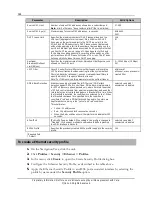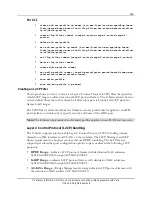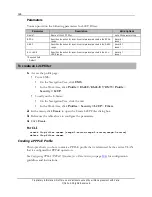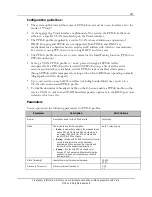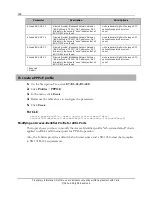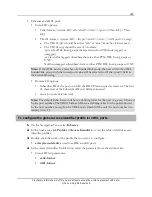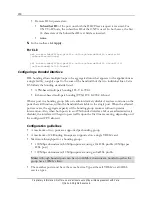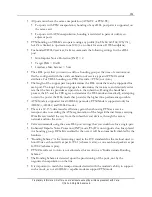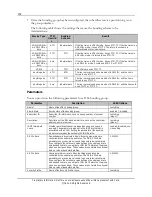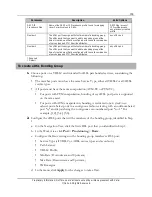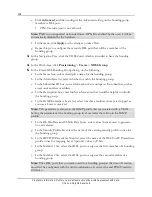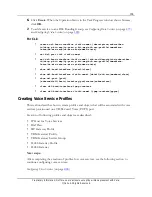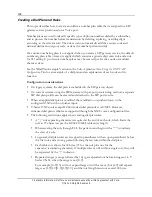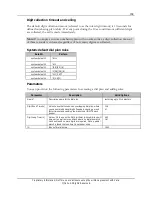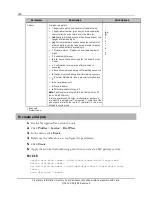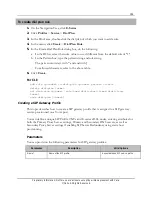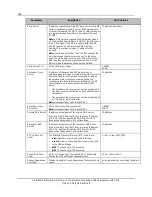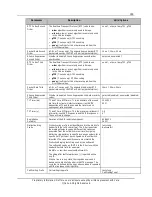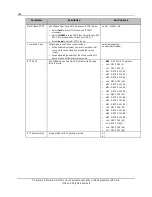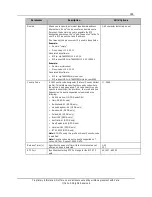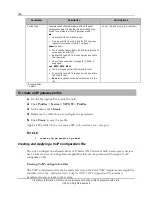
151
Proprietary Information: Not for use or disclosure except by written agreement with Calix.
© Calix. All Rights Reserved.
All ports must have the same encapsulation (ATM-TC or PTM-TC).
For ports with PTM encapsulation, bonding of any xDSL port pairs is supported on
the same card.
For ports with ATM encapsulation, bonding is restricted to pairs of odd/even
adjacent ports.
PTM bonding on VDSL2 can operate using any profile (8a/8b/8c/8d/12a/12b/17a),
but 17a is limited to upstream tone 1216 (i.e. no limit for annex-B 998 bandplans).
For bonded VDSL2 services, Calix recommends the following settings for the xDSL
port:
Min Impulse Noise Protection (INP) = 2
Target SNR = 10 dB
Interleave Max Latency = 5 ms
The xDSL ports that you want to add to a bonding group at the time of creation must
first be configured with the valid combination of service type and PTM Override
attributes. For VDSL bonding, use PTM Override = PTM (not Auto).
The length of the copper pair loop determines the DSL mode that can be supported for
each port. The loop's length and gauge also determines the train rate, and derived service
rate that the Service provider can provide to the subscriber. During the handshake
process, the E5 and the CPE agree to determine the DSL mode automatically, attempting
to train the port at the DSL mode that provides the highest line performance possible.
ATM Mode is supported for all ADSL-type modes. PTM Mode is supported only for
ADSL2+, ADSL2, and VDSL2 modes.
There is a 12-15% data transfer efficiency gain when choosing PTM as a service
transport, due to avoiding the ATM segmentation of the larger Ethernet frames carrying
IP traffic serviced all the way from the subscriber end devices, through the access
network and into the core.
Calix recommends using the same DSL port settings that you would use for a single-pair.
Enhanced Impulse Noise Protection (INP) mode ‘PhyR’ is not supported on lines placed
in a bonding group. If PhyR is enabled by the user, it will be automatically disabled by the
hardware.
“Bonding Scheme” is the terminology used in the ITU standards for the method used to
bond. One can bond cells as per G.998.1 (scheme is atm), or one can bond packets as per
G.998.2 (scheme is ptm).
PTM Override set to Auto is not allowed as this results in an “Indeterminate Bonding
Scheme.”
The Bonding Scheme is detected upon the provisioning of the ports, not by the
negotiated encapsulation on the line.
It is important to match the transport mode desired with the modem’s ability to support
such a mode, as not all ADSL2+ capable modems support PTM mode.

